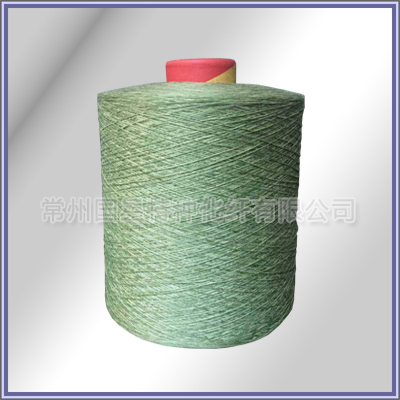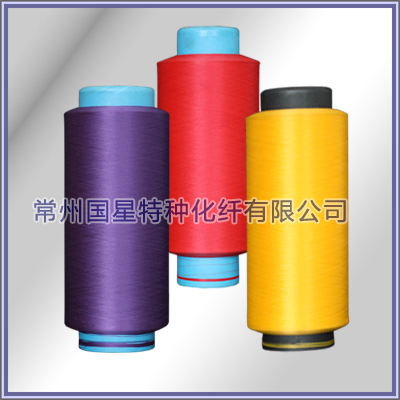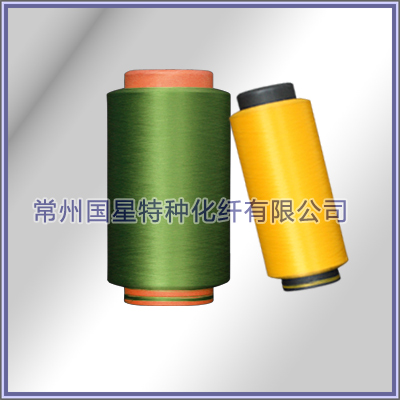Since March this year, the overseas epidemic situation has spread rapidly. All the enterprises involved in foreign trade exports across the country have more or less delayed or cancelled orders, including our textile industry. Even during that time, there was a wave of "snatching export" orders, mainly referring to sending the order first before the customer cancelled the order, which also shows the severity of the textile foreign trade. Even though it is already late May, foreign trade orders are still very scarce because there is no sign of the overseas epidemic being controlled.
Slow recovery of foreign trade
Only a few companies have orders to do
While the market conditions are improving, we are more concerned about the foreign trade that has been in a state of suspension, whether it has recovered recently with the resumption of work and the recovery of the domestic market. However, through research, the answer we get is not ideal. According to the feedback from the sample companies, 90% of the companies still did not receive the foreign trade orders, and the entire export trade was at a standstill.
A person in charge of an enterprise that originally accounted for 90% of foreign trade reported, "Our foreign trade is all exported to Malaysia, Australia, Japan and other goods. It is still in a state of stagnation. Customers who previously canceled orders have not requested delivery, and new orders are not The customer has resumed work, but has not received the order, so no one can do it. "
Only a few companies stopped exporting without being affected by the epidemic, but the number of orders has decreased a lot. Enterprises that have not stopped exporting are basically sent to Southeast Asian countries, such as Bangladesh and Vietnam. A foreign trade company reported that there are always export orders, but the quantity is small. In the past, an order was tens of thousands, hundreds of thousands of meters, and now more than 10,000 orders are very rare.
There are even a few companies whose foreign trade orders start from a stagnation state to start a small number of orders. In fact, overseas companies basically resume work, and the reason why foreign trade orders did not recover on a large scale is mainly due to the sharp decline in apparel demand under the influence of the epidemic. It is difficult for overseas apparel manufacturers to receive new orders.
The market list is generally in a slight increase from last week. With more domestic trade, foreign trade has begun to take place, mainly exporting to the United States. But the amount is not large, tens of thousands of meters, mainly home textile fabrics. A trade veteran revealed.
The escalation of Sino-US trade friction may affect the progress of foreign trade recovery
The United States' new coronary pneumonia epidemic is the most serious country in the world. Up to now, more than 1.64 million cases have been diagnosed. It is also very gratifying that the epidemic is so raging, and you can still receive a US bill. However, the recent U.S. blockade of Huawei has further deteriorated Sino-U.S. Relations, and the trade friction between the two sides has escalated. For this problem, there will be a subtle impact on the textile trade.
Recall that in 2019, the year when Sino-US trade friction had the greatest impact on textile foreign trade exports, in addition to the reduction in orders directly exported to the United States, orders for global exports have been affected to varying degrees, resulting in a sluggish foreign trade market. At present, foreign trade has just begun to show signs of recovery. The Sino-US trade friction will be detrimental to the recovery of foreign trade, and I am afraid that recovery will be slow. But the hardest time has passed, and nothing can stop the textile man from taking orders!
Domestic market continues to pick up
But the follow-up fear continues
From the above situation, the market is indeed picking up, but there are still some parts that are not ideal, or there are enterprises that have fallen compared with last week. A weaving company that mainly produces polyester taffeta, Shumei silk, Chunya textile and other market orders said: "The market orders this week are generally the same as those of the previous week, and this wave of heat will not last long, at most half a month. "
This company not only reported the decline of the market's single popularity, but also showed that it is not optimistic about the continuation of this wave of popularity. Although many companies are taking orders well, they still lack confidence in the future. They also believe that this wave of follow-up is difficult to continue.
A trade boss summed it up: "There are basically no hot products right now, as long as one or two hot products come out, everyone will do it in a hurry, and the heat will come down in ten days and a half months. Like protective clothing fabric polyester taffeta Chunya Textile is very hot. Dyeing factories basically do these, and they are basically sent to Vietnam, but we did not do it, because it is difficult to meet the export standards, and there may be some troubles later. "
There are no foreign trade orders, but factories and workers cannot stop easily. In order to maintain normal production and operation, many export enterprises began to set their sights on the domestic trade market. According to statistics, Alibaba's domestic trade platform 1688 added a total of more than 20,000 new foreign trade factories in the past month, and an average of nearly 700 foreign trade factories are stationed every day. The trading volume of foreign trade factories on the platform has exceeded 22 billion yuan a month. In addition, since last year, at least 320,000 domestic export-oriented export companies are seeking to transform domestic trade.
In our textile industry, there are also a few cases where foreign trade has turned to domestic trade. It should be known that the attractiveness of textile domestic trade has declined year by year in recent years. On the one hand, because of the large volume of foreign trade orders, a variety or even a color has hundreds of thousands of meters. However, domestic trade orders are often small, scattered, and have many styles. On the other hand, in terms of payment, foreign trade orders are often paid back in a timely manner, while domestic trade orders have a higher risk of arrears in payment.
Although the advantages and disadvantages of domestic and foreign trade are very obvious, in the absence of foreign trade orders, many textile companies can only take the path of domestic trade. But it is obviously not a good thing for so many textile enterprises to enter the domestic trade market.
Increased competitive pressure
Profits continue to shrink
Compared with the foreign trade market, domestic trade space is extremely limited, especially this year it is more crowded. Insufficient domestic trade orders are the norm in this year's textile market. Oversupply will lead to low-price competition. Low prices in the market and even loss-making are common occurrences.
According to a person in charge of a weaving factory, they are making satin, polyester taffeta, Chunya spinning and other fabrics, and they are mainly doing the domestic trade market. There are currently more than 2 million meters of inventory in the warehouse, and this year the pressure is very great. But the greater pressure comes from the return to the low-cost sales of domestic trade counterparts, for which they have to adopt the same approach. Now the profits of the grey cloths they sell are basically only a few cents. This is still based on the low price of raw materials. Once the price of raw materials increases, it is basically a small loss to ship.
Not only the return of foreign trade enterprises to domestic trade will seriously affect the profits of related companies, but also overdraft of market orders, so that the domestic trade market in the situation of improvement is rapidly exhausting orders.
Orders flock
The heat decayed rapidly
After the domestic epidemic situation is controlled, the domestic trade market has gradually recovered. Especially in the recent period, polyester taffeta, Chunya spinning, artificial silk, nylon spinning and so on have all had a brilliant performance. However, these orders are not as strong as they were in previous years, and most of them do not see a hot sale in a week or two.
A live dyeing factory in the market has been in full production for a while, but the order of the last week has been a turnaround. Only 10 of the 10 setting machines have been opened, and the workers are again shifted by two shifts. It became "three shifts".
A trader explained the situation. Two weeks ago, the market in the dye factory was a lot live, and most of them were sent to Guangdong and other places. I thought that market activity could drive a wave of quotations, but now I can hardly see orders for market activity, and the whole market is silent again. Mainly because there are too many people doing domestic trade, but when there are one or two fabric hotspots, the companies are swarming up, the orders are quickly divided and the heat is quickly falling back.
Generally speaking, the market is still "monk more porridge less" extremely lack of orders, especially in a large number of foreign trade enterprises to change the direction, began to enter the domestic trade, but also increased the burden on the market. Any order will be quickly digested by the market, and it is too late to ferment. There are even many companies that are overdrafting orders for the next autumn and winter fabrics and producing them in May.
The domestic trade market is not a "savior", and it is impossible for all textile enterprises to be exposed to rain and dew. If the foreign trade market cannot recover in time, the domestic trade market may even be "played bad".

 +86-519-86266888
+86-519-86266888 gxhx888@126.com
gxhx888@126.com



